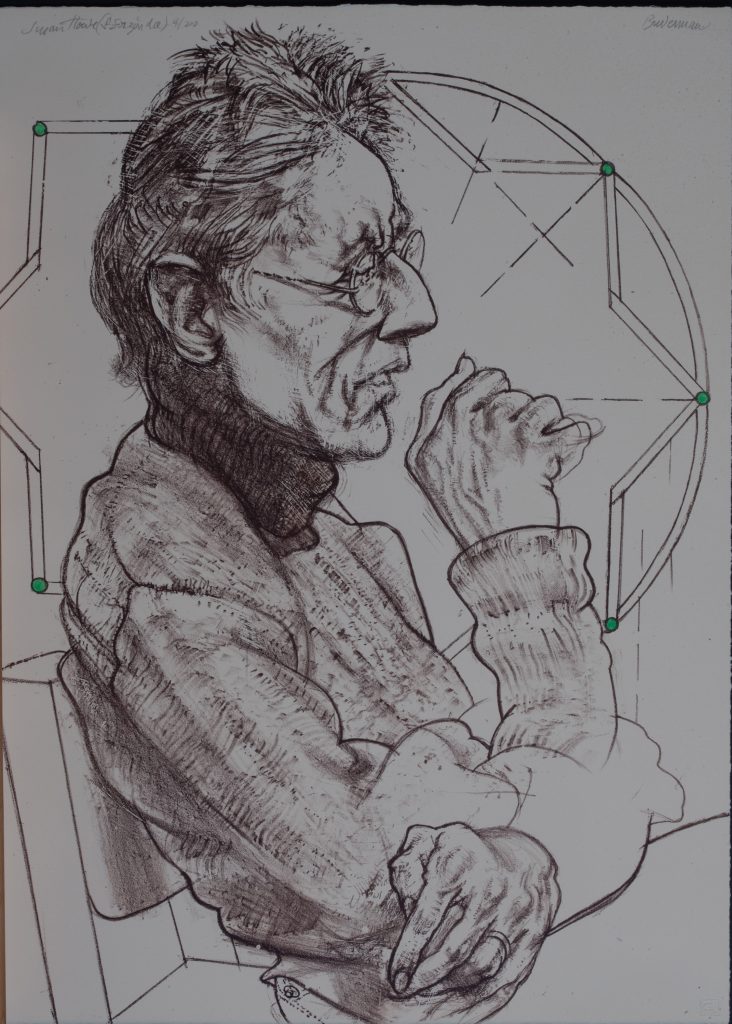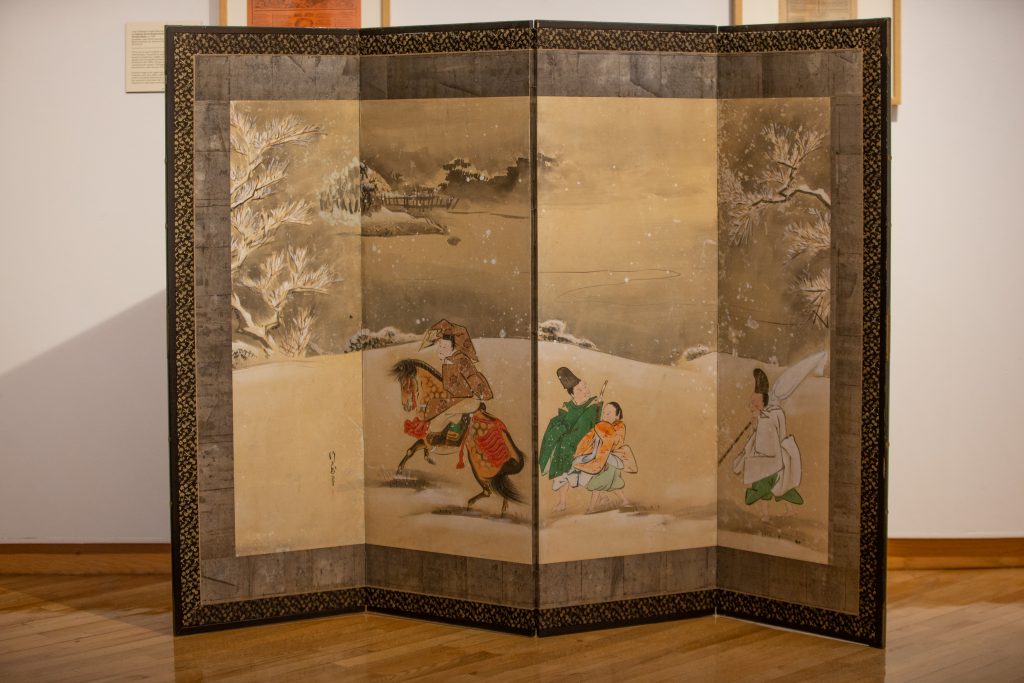
By Collections Manager / Registrar, Laura Stewart
In recognition of Women’s History Month, I would like to call attention to some of the fascinating stories that further illustrate the contributions of women to the artworld-at-large, as well as to Miami University Art Museum. On view during spring semester 2022 are various and powerful artworks by women artists, of women subjects, and from women art collectors. The best part is that additional examples are are available to visitors through June 11 in the exhibition Collection Highlights: Recent Acquisitions.


Baptismal, 1950s
Oil on board
Gift of Larry Wayne Richards and Frederic Urban
2019.30
The very first artist one encounters upon entering the exhibition is Clementine Hunter. Her Baptismal, from the 1950s, is an oil on board painting of a baptism ceremony being performed on a sunny day outside a country church. Hunter was a self-taught, African-American artist known for her naïve and colorful paintings of rural, southern life. Born to a Creole family on a Louisiana plantation some 20 years after the Civil War ended, Hunter’s paintings often included images inspired by Christianity, as is the case with this Miami University Art Museum 2019 acquisition.

Fountain Square, Cincinnati, 1915
Oil on canvas
Gift of Gary Catron
2019.11
This genre painting of an outdoor scene by Cincinnati-native Annette Covington is indicative of her preference for rendering observations and encounters from her own life. Known primarily for her landscapes, portraits and illustrations, Covington was an 1895 graduate of Western College for Women, now a part of Miami University in Oxford, Ohio. In 1916, Covington became the president of the Cincinnati Women’s Art Club, only a year after she painted this image of Fountain Square, located in downtown Cincinnati.

Susan Howe (Sforzinda), 2015
Lithograph on paper
Gift of Harvey Breverman
2018.8.G
Susan Howe is an American poet; her portrait by artist Harvey Breverman (American, b. 1934) is one of a group of to three lithographs on display. After Howe graduated from the Boston Museum School in 1961, she became a New York City painter. In 1988 she took a job as a visiting professor in English at the SUNY Buffalo where she worked until retirement in 2006. Breverman was a colleague at the University of Buffalo and saw Howe speak during his time there. Although there is another portrait of a woman (the author Amy Tan) in Breverman’s Drawn From Life (2015) portfolio from which this print comes, Howe is the only figure shown in profile.

Genji in Snow with his Retainers, ca. 1830
Painting on paper, bordered by metal foil paper, mounted on silk
Bequest of Carol Kane (with special thanks to Ned and John Kane)
2020.4
This 4-panel screen, created during Japan’s Edo period (1600-1868), features the gold leaf background consistent with screens from this time. In the 11th century, the writer Murasaki Shikibu (Japanese, c. 973 or 978 – c. 1014 or 1031), wrote her epic fictional story The Tale of Genji, considered to be one of the world’s first novels. The tale is loosely based on real events experienced by the female novelist while she served as a lady-in-waiting to Empress Shoshi at the Imperial court. This folding screen’s scene shows one of Genji’s adventures during the winter season. The donor of this work, Carol Kane (American, 1938-2020), was a beloved Art Museum docent for many years and a longtime supporter who is sorely missed.

Folio, 2008
Monoprint (lithograph) on rice paper mounted on rag
Gift/Purchase by Department of Art, Miami University, on occasion of Ellen Price’s Retirement
2020.5
Ellen Price (American, b. 1955) created the 2008 lithograph, Folio. Professor Emerita (retired 2021) at Miami University, Price previously served as the Graduate Director of the MFA Studio Program and head of the Printmaking department. She created Folio from an early-20th century photograph of one of her ancestors, William Price, the younger brother of the artist’s paternal grandfather. With this print and others in the series, Price sought to “locate my identity between the revealed and the hidden” and to “acknowledge the imperceptible pull which the past exerts on the present.”
Next to Folio on the gallery walls, the artist Joyce Tenneson (American, b. 1945) celebrates the strength of older women in her photograph, Lola Santos, 2000 (pictured below). For her book, Wise Women: A Celebration of Their Insights, Courage, and Beauty, Tenneson interviewed and photographed women from the ages of 65 to 100. This photograph features Santos (age 76) with her granddaughter Alex, and captures the elder Santos’ warmth and grace. The two figures, old and young, seem to blend together as one before the artist’s lens. Here, Tenneson makes a powerful statement about the passing of female knowledge between generations.

Lola Santos, 2000
Archival Pigment Print
2019.32.1

Laura Stewart is the Collections Manager/Registrar at Miami University Art Museum. Stewart’s academic background includes having earned an M.A. in art history with a museum studies graduate certificate from the University of Cincinnati (2003), a B.A. in art history from the University of Kentucky (2000), and an AS in Paralegal Studies from Sullivan University (1992). Stewart has taught college-level art history and museum studies courses at several Southwestern Ohio universities since 2008, including Miami University’s CCA 232A, “Museums Today: Content, Practices & Audiences”, and she currently serves as the program advisor for Miami’s Museums and Society Minor.
